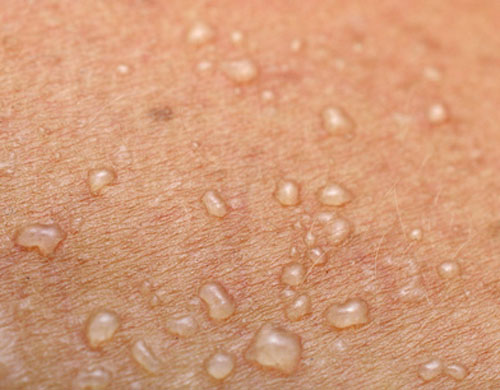Scientists at King's College London (KCL) say they have identified a new mechanism by which skin damage triggers the formation of tumors. They believe their finding could have important therapeutic implications for patients suffering with chronic ulcers or skin blistering diseases.
The study (“Innate sensing of microbial products promotes wound-induced skin cancer”), published in Nature Communications, highlights an innate sensing of bacteria by immune cells in the formation of skin tumors. This molecular process could tip the balance between normal wound repair and tumor formation in some patients, according to researchers.
“We show that tumor incidence correlates with wound size and inflammatory infiltrate,” wrote the investigators. “We conclude that in our experimental model the combination of bacteria, chronic inflammation, and wounding cooperate to trigger skin cancer.”0.1
Although an association between tissue damage, chronic inflammation, and cancer is well established, little is known about the underlying cause. Epidermolysis bullosa (EB), for instance, is one of several rare inherited skin conditions associated with chronic wounding and increased risk of tumors.
However, this study reportedly is the first to demonstrate that bacteria present on the skin can contribute to the development of skin tumors.
Researchers found that when mice with chronic skin inflammation are wounded they develop tumors at the wound site, with cells of the immune system required for this process to take place. They discovered that the underlying signaling mechanism involves a bacterial protein, flagellin, which is recognized by toll-like receptor 5 on the surface of the immune cells.
Although the direct relevance to human tumors is yet to be tested, researchers have shown that HMGB1, a protein found to be highly expressed in mice with chronic skin inflammation, is increased in human patients with EB. The study found a reduction in HMGB1 levels in mice when the TLR-5 receptor was removed from immune cells. This raises the possibility of future treatments aimed at reducing levels of the flagellin bacterial protein on the skin surface, or targeting the TLR-5 receptor.
“These findings have broad implications for various types of cancers and in particular for the treatment of tumors that arise in patients suffering from chronic ulcers or skin blistering diseases,” said Fiona Watt, Ph.D., lead author and director of the Centre for Stem Cells and Regenerative Medicine at KCL. “In the context of chronic skin inflammation, the activity of a particular receptor in white blood cells, TLR-5, could tip the balance between normal wound repair and tumor formation.”
She added that the team’s study raises the possibility that the use of specific antibiotics targeting bacteria in wound-induced malignancies might present an interesting clinical avenue.


